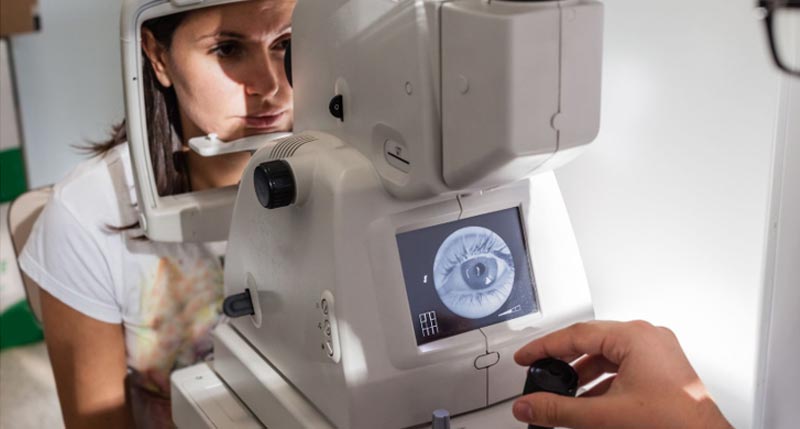Why Retinal Detachment is an Eyecare Emergency
Your retina is the extremely light-sensitive nerve tissue at the back of your eye that enables your eye to focus and see. The retina captures and processes incoming light and images, then passes that information to the brain, which results in your ability to see.
A functioning retina is fundamental to being able to see.
So, when retinal tissue detaches from the back of the eye and loses blood flow and oxygenation, it is an emergency that requires immediate care. Without surgery to fix the detached retina, the result will be loss of vision in the affected eye. Without immediate treatment, you can lose vision within hours as retinal tissue degenerates and dies.
Let’s examine who is at risk for this dangerous condition and the symptoms it presents.
Who is at Risk for Retinal Detachment?
Retinal detachment risk increases with age—you are more likely to have a retinal detachment after age 50. Other factors that increase your risk of developing it include:
- Eye injuries. If you’ve had a recent eye injury, it’s a best practice to visit your optometrist to check for early signs of retinal detachment.
- Family history. If any member of your family has experienced a retinal detachment, you are more likely to.
- Eye surgery. Cataract correction surgery or another eye surgery puts you at higher risk.
- Diabetic retinopathy. If you have diabetes and the blood vessels in your eye are affected, your risk increases.
- Extreme myopia (nearsightedness). People with significant nearsightedness and/or degenerative myopia are at higher risk.
- Other eye diseases and conditions. Thinning of the retina, separating of retinal tissue, or a posterior vitreous detachment put you at higher risk of retinal detachment.
What are the Types of Retinal Detachment?
There are three main categories of retinal detachment:
- Small tear in the retina (rhegmatogenous). If there is a slight tear in your retinal tissue, the vitreous (eye fluid) might leak through it and collect behind your retinal tissue, pushing it away from the back of your eye and causing detachment.
- Scar tissue on the retina (tractional). This is a common cause of retinal detachment in diabetic patients who might suffer damage to the tiny blood vessels in the eye. If the resulting scar tissue begins to pull on the retinal tissue, it can detach.
- Fluid buildup behind the retina (exudative). Even without a retinal tear, fluid can collect behind the eye and push the retina away from the back wall of your eye.
What are the Symptoms of Retinal Detachment?
Retinal detachment doesn’t hurt, but it often presents with significant, sudden symptoms. If you experience any of these symptoms, call your optometrist immediately and seek medical attention:
- Flashes of light in your field of vision
- A significant, sudden increase in the number of floaters. (Note: a few floaters are normal in the aging eye. But an immediate, big increase in the number of floaters could be a sign of retinal detachment.)
- Darkening of your side (peripheral) vision.
- Darkening or shadowing of any area of vision, as if a curtain was pulled over it.
How is Retinal Detachment treated?
We cannot stress this fact enough: A retinal detachment is a severe eye emergency that requires immediate treatment.
If you suspect you may be experiencing a retinal detachment, it is critical to seek treatment from a healthcare provider right away to reattach the retina and try to prevent vision loss.
The specific treatment for a retinal detachment will depend on the type and extent of retinal detachment you are diagnosed with. These include:
- Laser therapy. A medical laser can reattach the retinal tissue.
- A freezing tool can be used to repair a retinal tear.
- Gas bubble (pneumatic retinopexy). A small gas bubble is injected into the eye’s vitreous fluid. It presses against the retina, closing the tear naturally as the fluid that had collected beneath the retina is reabsorbed by the body.
- Scleral buckle. A band of silicon (that you can’t see) is surgically positioned around the eye to hold the retina in place.
- The vitreous fluid is surgically removed, and a bubble of oil, gas, or air is positioned to push the retina back into its proper place.
How can you Prevent Retinal Detachment?
While aging is inevitable and many retinal detachments are not preventable, there are two main approaches to preventing this medical eye emergency:
- Wear safety glasses or goggles whenever you play sports or participate in other activities that may risk eye health
- Schedule an annual eye exam with your optometrist. Have an annual comprehensive eye exam, especially if you are myopic (nearsighted) and more prone to retinal detachment.
Retinal detachment is a rare condition that impacts from 10 to 18 per 100,000 people in the U.S. each year. Like many conditions, the earlier you catch a retinal detachment and seek treatment with your optometrist or in the emergency room, the more likely you are to prevent vision loss from this condition. Fortunately, retinal detachment repair has about a 90% success rate.
If you have questions about your specific risk for retinal detachment, we look forward to answering them during your annual comprehensive eye exam. Call us today to schedule!


Recent Comments